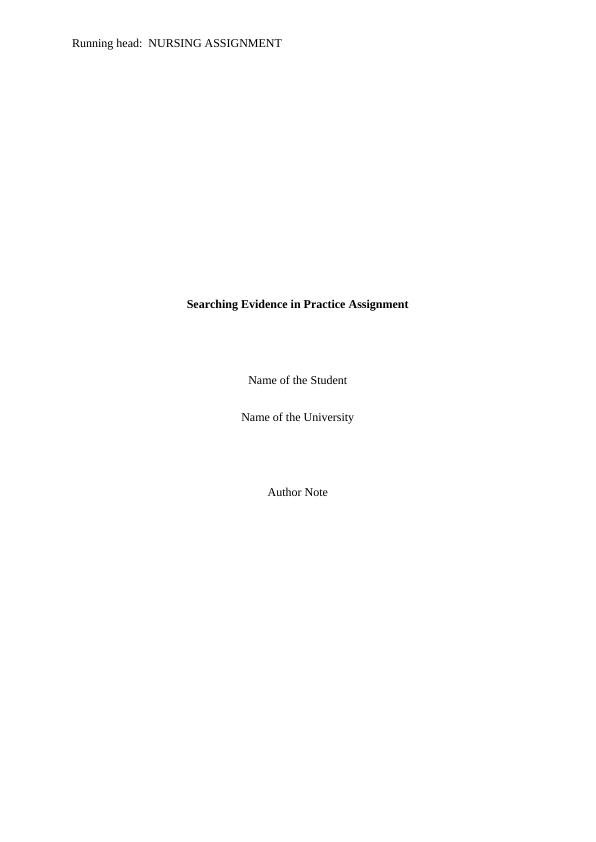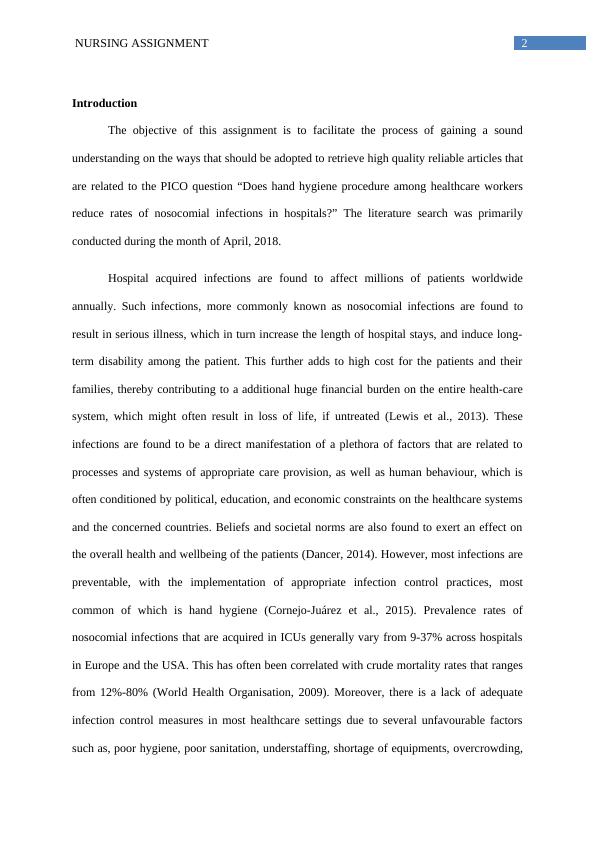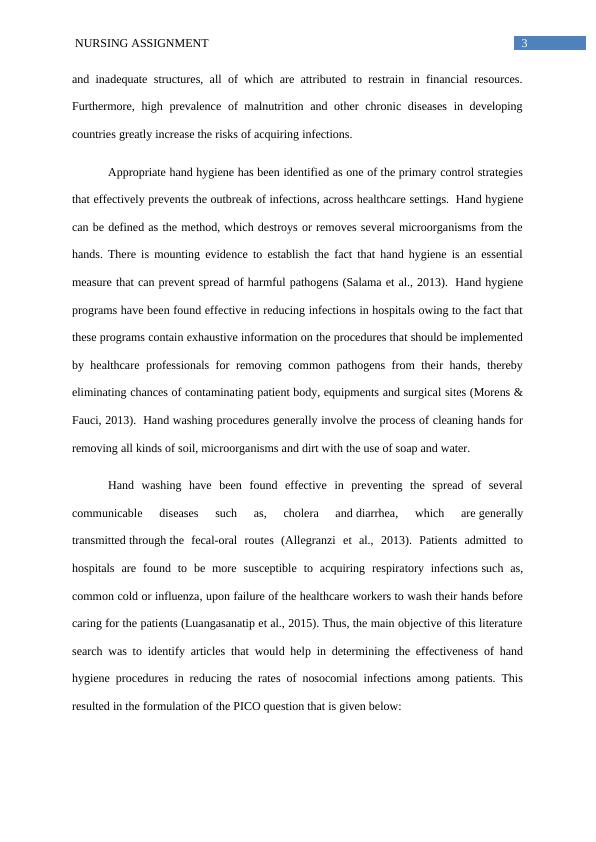Ask a question from expert
Searching Evidence in Practice Assignment
18 Pages4357 Words27 Views
Added on 2021-05-31
Searching Evidence in Practice Assignment
Added on 2021-05-31
BookmarkShareRelated Documents
Running head: NURSING ASSIGNMENTSearching Evidence in Practice AssignmentName of the StudentName of the UniversityAuthor Note

1 NURSING ASSIGNMENTTable of ContentsIntroduction................................................................................................................................2Study selection criteria...............................................................................................................4Searching the literature..............................................................................................................5Hybrid Discovery (HyDi) search engine................................................................................6PubMed..................................................................................................................................9Google Scholar.....................................................................................................................12Snowball technique..............................................................................................................14Conclusion................................................................................................................................15References................................................................................................................................17

2 NURSING ASSIGNMENTIntroductionThe objective of this assignment is to facilitate the process of gaining a soundunderstanding on the ways that should be adopted to retrieve high quality reliable articles thatare related to the PICO question “Does hand hygiene procedure among healthcare workersreduce rates of nosocomial infections in hospitals?” The literature search was primarilyconducted during the month of April, 2018. Hospital acquired infections are found to affect millions of patients worldwideannually. Such infections, more commonly known as nosocomial infections are found toresult in serious illness, which in turn increase the length of hospital stays, and induce long-term disability among the patient. This further adds to high cost for the patients and theirfamilies, thereby contributing to a additional huge financial burden on the entire health-caresystem, which might often result in loss of life, if untreated (Lewis et al., 2013). Theseinfections are found to be a direct manifestation of a plethora of factors that are related toprocesses and systems of appropriate care provision, as well as human behaviour, which isoften conditioned by political, education, and economic constraints on the healthcare systemsand the concerned countries. Beliefs and societal norms are also found to exert an effect onthe overall health and wellbeing of the patients (Dancer, 2014). However, most infections arepreventable, with the implementation of appropriate infection control practices, mostcommon of which is hand hygiene (Cornejo-Juárez et al., 2015). Prevalence rates ofnosocomial infections that are acquired in ICUs generally vary from 9-37% across hospitalsin Europe and the USA. This has often been correlated with crude mortality rates that rangesfrom 12%-80% (World Health Organisation, 2009). Moreover, there is a lack of adequateinfection control measures in most healthcare settings due to several unfavourable factorssuch as, poor hygiene, poor sanitation, understaffing, shortage of equipments, overcrowding,

3 NURSING ASSIGNMENTand inadequate structures, all of which are attributed to restrain in financial resources.Furthermore, high prevalence of malnutrition and other chronic diseases in developingcountries greatly increase the risks of acquiring infections.Appropriate hand hygiene has been identified as one of the primary control strategiesthat effectively prevents the outbreak of infections, across healthcare settings. Hand hygienecan be defined as the method, which destroys or removes several microorganisms from thehands. There is mounting evidence to establish the fact that hand hygiene is an essentialmeasure that can prevent spread of harmful pathogens (Salama et al., 2013). Hand hygieneprograms have been found effective in reducing infections in hospitals owing to the fact thatthese programs contain exhaustive information on the procedures that should be implementedby healthcare professionals for removing common pathogens from their hands, therebyeliminating chances of contaminating patient body, equipments and surgical sites (Morens &Fauci, 2013). Hand washing procedures generally involve the process of cleaning hands forremoving all kinds of soil, microorganisms and dirt with the use of soap and water. Hand washing have been found effective in preventing the spread of severalcommunicable diseases such as, cholera anddiarrhea, which aregenerallytransmittedthroughthe fecal-oral routes (Allegranzi et al., 2013). Patients admitted tohospitals are found to be more susceptible to acquiring respiratory infectionssuch as,common cold or influenza, upon failure of the healthcare workers to wash their hands beforecaring for the patients (Luangasanatip et al., 2015). Thus, the main objective of this literaturesearch was to identify articles that would help in determining the effectiveness of handhygiene procedures in reducing the rates of nosocomial infections among patients. Thisresulted in the formulation of the PICO question that is given below:

End of preview
Want to access all the pages? Upload your documents or become a member.
Related Documents
Introduction to Nursing Research | Essaylg...
|6
|1532
|17
Nursing assignment : Hygienelg...
|14
|3506
|73
Systematic Review on the Importance of Hand Hygiene in Infection Control and Reduction of Nosocomial Infectionslg...
|20
|4673
|21
Infection Control: Use of Chlorhexidine Washcloths to Prevent Nosocomial Infectionslg...
|13
|3180
|339
Nursing Assignment on Nosocomial Infectionslg...
|6
|1078
|277
Hand Hygiene Compliance and Nosocomial Infection: A Focused Search Strategylg...
|14
|2637
|245